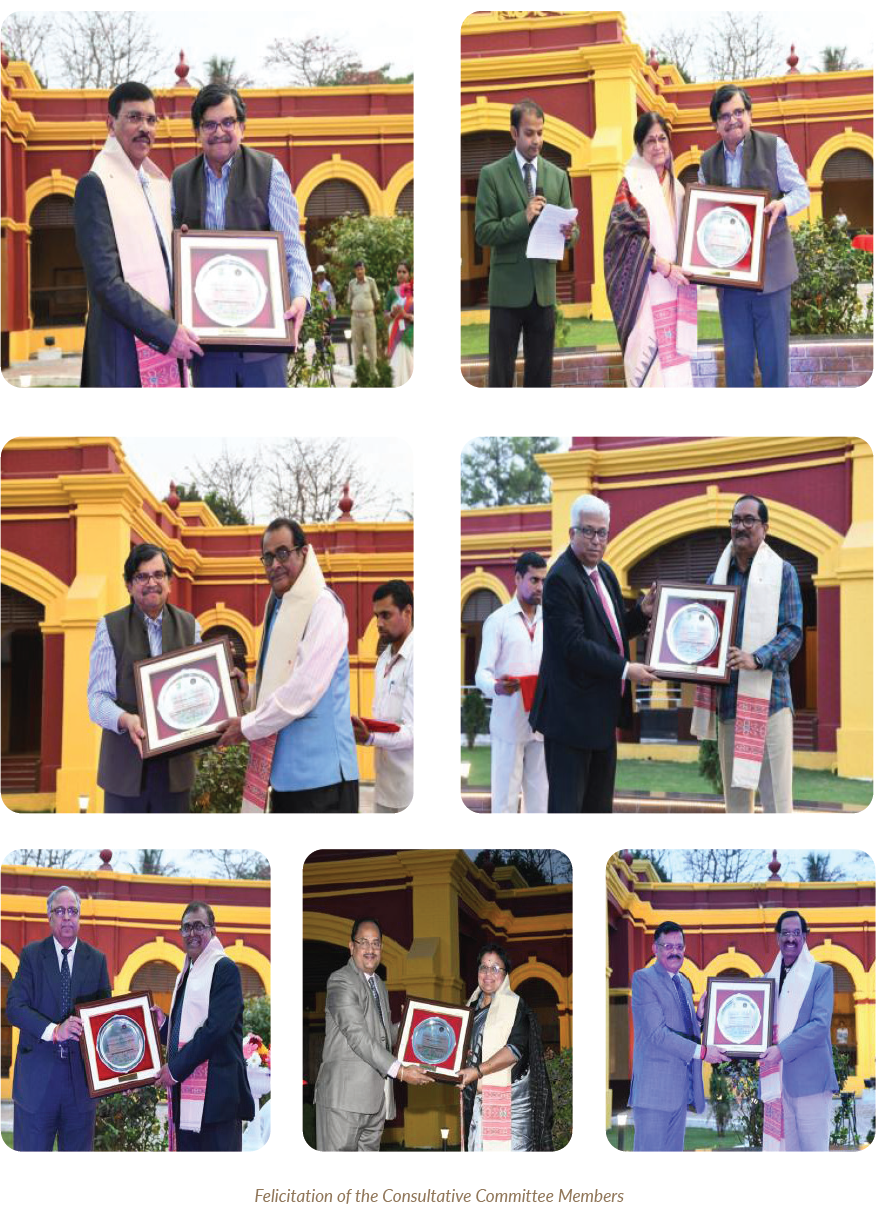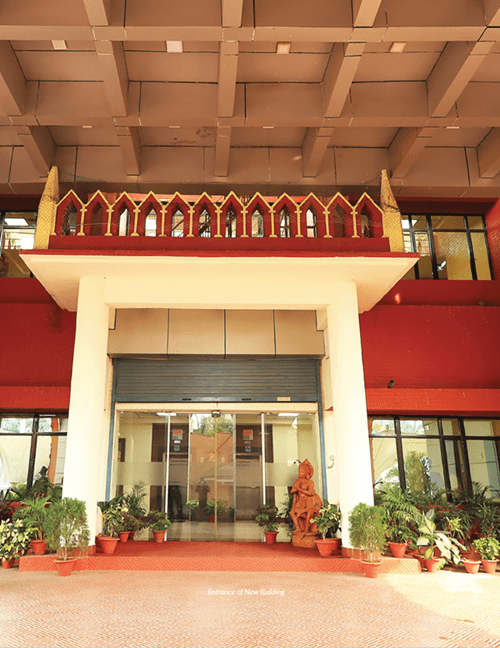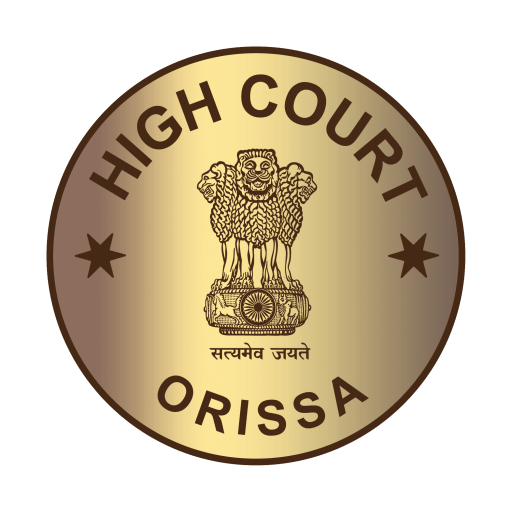Centre for Judicial Archives of Odisha and Museum of Justice
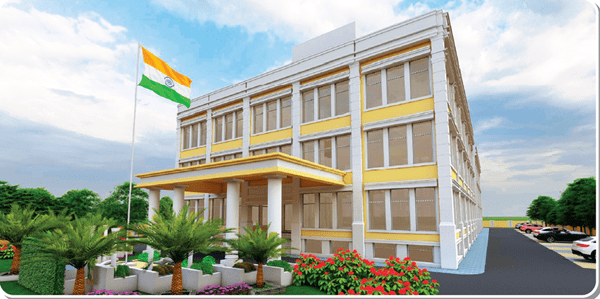
A. CENTRE FOR JUDICIAL ARCHIVES:
Judicial records are window to the social history of the country and some of the best histories in the world have been written using the judicial records. The idea of documenting the judicial history of Odisha was mooted in the year 2020 during the tenure of Justice Mohammed Rafiq, the then Chief Justice of High Court and it gained momentum after establishment of Record Room Digitization Centre (RRDC) during the tenure of Dr. Justice S. Muralidhar as the Chief Justice.
In 2022, Dr. S. Muralidhar proposed the State Government for creation of the Centre for Judicial Archives and the Centre came into existence by notification no. 14386 dated 1st May 2022 of the Home Department of Government of Odisha. It started functioning in the building of the RRDC with a Directorcum- OSD, two consultants, one each from the faculty of Law and History and four law researchers, two from law and two from history background, along with necessary support staff. All the judicial records up to the year 1949 were declared as fragile records for the purpose of preservation and archiving so that research work for the judicial history project could be undertaken. Subsequently, it was decided to preserve even the post-1949 records of social relevance and of juristic importance.
Few months after establishment of the Centre, the State Government provided a land near the RRDC for construction of its permanent building. On 28th January 2023 the foundation stone for the building was laid by Shri Naveen Patnaik, Chief Minister of Odisha in presence of Justice Vineet Saran, former judge, Supreme Court of India and the then Chief Justice of High Court Dr. Justice S. Muralidhar. The construction work of the building is presently going on and expected to be completed within a period of six months.
The Centre for Judicial Archives acquires judicial records from the RRDC and the Record Rooms of the District Courts. RRDC has a unique repository of old judicial records of the High Courts of Calcutta, Patna and Orissa as well as records of various erstwhile Princely States and the Sadar Dewani Adalat and Sadar Nizamat Adalat dating back to 19th Century, the oldest of them being of the year 1814. The record rooms of district courts too have equally old records, the oldest one being of the year 1808. After acquisition, the records are catalogued, then preserved and digitized. Preservation of records has been entrusted to a specialized agency Indian National Trust for Art and Cultural Heritage (INTACH).
Progress of acquisition, preservation, cataloging and digitization
Acquisition, preservation, cataloguing and digitization are key to archiving. So far, 63833 records have been acquired in the Centre, out of which 47494 records have came from the districts. 21581 records have been catalogued so far and out of them, 12044 records have been catalogued from 1st January to 31st December, 2023. The records are in different languages such as Persian, Odia, Telugu, Bengali and English. In some cases these are written in Odia language, but in Persian or English script. Since the documents are in different languages, Mr. Nadeem Akhtar, visiting faculty in Persian language of Asoka University, Sonepath, has been engaged to read and provide their gist for the preparation of a descriptive catalogue. He has provided gist of 142 records till 31st December, 2023.
Since the records are 70 to 215 years old and in extremely fragile condition, INTACH is utilizing state of the art technology to conserve them. 2507 records have been conserved so far, out of which 1739 records have been conserved during the period from 1st January, 2023 to 31st December, 2023. Further, 1101 records have been digitized so far, out of which 900 records have been digitized during the period from 1st January, 2023 to 31st December, 2023.
On 18th April, 2023, a Standard Operating Procedure (SOP) for consultation of records by the Scholars was finalized by the RRDC Committee. In accordance with the said SOP, researchers are being facilitated to consult the records of the Centre. 10 records have been consulted for research so far.
Completion of one year of the Centre
On 10th May, 2023 completion of one year of the Centre was celebrated in a function at Odisha Judicial Academy where Dr. Prabhu Prasad Mohapatra, Professor of History of University of Delhi was the distinguished guest.
Dr. Mohapatra lauded the pioneering efforts of the High Court in promoting research into judicial records from historical perspective. Dr. Muralidhar pitched the idea of a National Judicial History Project for benefit of the country as a whole. A booklet containing the activities of the Centre for Judicial Archives was released and the Webpage of the Centre for Judicial Archives was launched on the occasion.
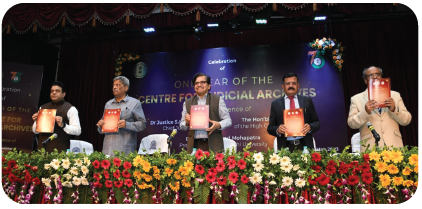
Judicial History of Odisha, Volume-I
With the vision of documenting the Judicial History of Odisha, Justice Mohd Rafiq, the former Chief Justice of the High Court of Orissa, had constituted a Committee under the Chairmanship of Dr. Justice B.R. Sarangi in 2020. However, due to covid-19 pandemic the work could not proceed much and in 2022 the Centre for Judicial Archives undertook this project under the guidance of the RRDC Committee.
Since there was a need for collection of archival materials for the project, it was felt necessary to visit some leading academic and archival institutions and libraries to survey their repositories. Accordingly, Justice Sashikanta Mishra, the then Member of the RRDC Committee and Dr. Lalatendu Das Mohapatra, the Director cum-OSD of the Centre visited Asiatic Society, West Bengal State Archives and Centre for Studies in Social Sciences in Kolkata, National Archives, Department of Post and Telegraph and Parliamentary Library in New Delhi. Scanned copies of important archival documents, news paper reports, photographs, paintings from old manuscripts and postage stamps were collected from those institutions. Besides, in 2023 photocopies of the Telugu inscription were collected from Sri Kurma temple of Srikakulam.
Dr Lalatendu Das Mohapatra and his team of consultants and Law Researchers visited Odisha State Archives and collected various archival documents which were found useful for the judicial history project. The team also visited the office of one of the oldest Odia daily “The Samaja’ and collected numerous old newspaper reports and photographs.
After collection of substantial amount of archival materials, the RRDC Committee, on 27th March, 2023, decided for publication of books on judicial history in two volumes. It was decided that the volume-I would cover the ancient and the medieval period and the volume-II would contain incidents from 1803 to 1948. Accordingly, contents for volume-I were finalized and the first book of the project ‘Judicial History of Odisha, Volume-I’ was released on 14th July, 2023 in the inaugural ceremony of the National Conference on Judicial History and Archiving.
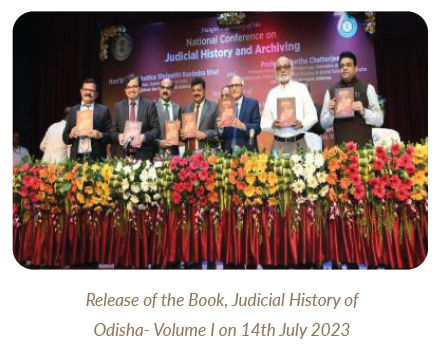
National Conference on Judicial History and Archiving
After completion of one year of the Centre for Judicial Archives, the High Court mooted the idea of sharing its experience with historians and researchers and gathering their inputs on judicial archiving. Accordingly, a three-day National Conference was held from 14th July to 16th July, 2023 in Odisha Judicial Academy with Judicial History of Odisha and the importance of archiving the judicial records as the focal point. Eminent historians and scholars from across the country and students of various educational institutions participated in the conference.
The conference was inaugurated on 14th July, 2023 by Justice Shripathi Ravindra Bhat, Judge, Supreme Court of India in the presence of Professor Partha Chatterjee, Professor Emeritus of Anthropology and of Middle Eastern, South Asian and African Studies, Dr. Justice S. Muralidhar, Chief Justice, High Court of Orissa, the Judges of the High Court of Orissa.
The book titled “Judicial History of Odisha, Volume-I” published by the Centre for Judicial Archives was released on the occasion by Justice Bhat and Professor Chatterjee. The book is divided into three parts – Ancient Period, The Tribes of Odisha and Their Customary Laws and The Medieval Period. It traces the judicial history upto the beginning of the period when the East India Company began its operation in India, and in Odisha in particular. The second volume will be on the period following, upto independence.
The Conference became the platform of an interdisciplinary collaboration and deliberation where legal luminaries and historians exchanged their thoughts on judicial archiving and its advantages.
In the inaugural function, Justice Shripathi Ravindra Bhat, Judge, Supreme Court of India termed the judicial history project undertaken by the High Court of Orissa as a pioneering step and said that it has set high standards for others to follow. Justice Bhat mentioned about the contribution of Odisha to the freedom struggle and said that the immense contribution of Odisha has remained unnoticed in other parts of the country. He expressed hope that the research undertaken by the Centre for Judicial Archives would unravel many other inspiring stories.
Dr. Justice S. Muralidhar said the judicial records tell us many stories on law and society, politics in law, economics in law and so on. He added, judicial repository is an invaluable resource for the historians and a seed in the form of the Centre for Judicial Archives has been planted which is to be nurtured by the researchers and students for the benefit of the society.
Justice Debabrata Dash highlighted the need of archiving of judicial records and said preservation of judicial history gives a sense of identity and continuity of past history and culture for future generations.
Professor Partha Chatterjee expressed his disagreement with the notion that all the laws having colonial roots should be discarded and said that a colonial law or system is retained or discarded after evaluating its effect on the political and social lives of the country. He termed the judicial archives as the invaluable source for evaluating the effects of the colonial laws and said that it helps in tracing the history of religious orders and sects, social history of genders, information on the condition of the princely states etc. He said, judicial archives have been of great interest not only for the legal historians but also for the social historians.
Several interesting topics were discussed by the historians and archivists in different sessions of the conference on 15th July and 16th July, 2023. The topics covered various aspects of freedom movement and its description in different official records, literature and other unofficial and private papers. The technical aspects of curating, archiving and the contemporary methods of Digitization were also discussed in the conference. The names of resource persons and the topics discussed by them are indicated below:
• Dr Amar Faroqui, former Professor of History, University of Delhi: Trial, Transportation and Sovereignty: Bahadur Shah and the Imperial Family in Captivity.
• Dr Anirudh Deshpande, Professor of Modern History, Department of History, Faculty of Social Sciences, University of Delhi: Justice and Punishment: The Royal Indian Navy Mutiny of February, 1946.
• Dr Ashok Anshouman, Historian: Calcutta High Court and its Divisions, Demands for a separate High Court for the new Province of Bihar & Orissa and the response of the High Court of Judicature at Fort William in Bengal, 1912-1916.
• Dr Jatindra Nayak: Law and lawyers in Fakir Mohan Senapati’s fiction: A reading of six acres and a third.
• Dr Umakanta Mishra, Assistant Professor, Department of History, Ravenshaw University : Of law, morality and resistance: Lokhono Naiko’s trial and execution.
• Dr Sasmiti Rani Sasini, Assistant Professor, School of History, Gangadhar Meher University, Amrut Vihar, Sambalpur, Odisha: Trial of Veer Surendra Sai : The political discourse of subordination through the Rule of law.
• Dr Sanjay Garg, Deputy Director, National Archives of India: Early colonial currency legislations and crime.
• Dr Karuna Mahil, Assistant Professor at Azim Premji University: The judiciary and labour: A historical reconstruction of the emergence of the legal and institutional framework with a focus on the Madras Presidency.
• Dr Bhavani Raman, Associate Professor and Associate Chair at the Historical and Cultural Studies, Department at the University of Toronto: In Search of Preventive Arrest’s Early Colonial History.
• Dr Prakash R, Assistant Director, Roja Muthiah Research Library: Modern Archival Systems – Overview.
• Dr Aparna Balachandran, Assistant Professor, Department of History, Faculty of Social Sciences, University of Delhi: The challenges of digitization : Perspectives from a historian.
• Bidisha Chakrobarty, Archivist, West Bengal State Archives: Prospect and possibilities of Judicial Archives.
Eminent historians Dr Prabhu Prasad Mohapatra, Dr Suranjan Das and Dr Nivedita Mohanty and the Director-cum OSD of the Centre for Judicial Archives Dr Lalatendu Das Mohapatra also participated in the deliberations.
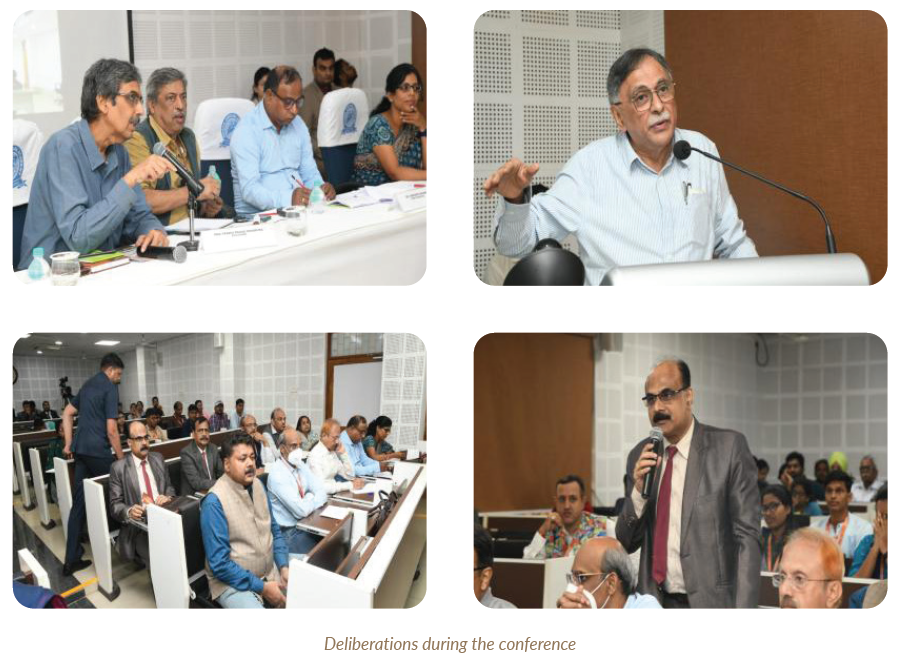
The Conference ended on 16th July, 2023 with a valedictory session. Speaking on the occasion Professor Kishor Kumar Basa, Chairman, National Monuments Authority urged the historians and students of judicial history to explore the possibility of inscriptions serving as sources of information about the judicial system of ancient period.
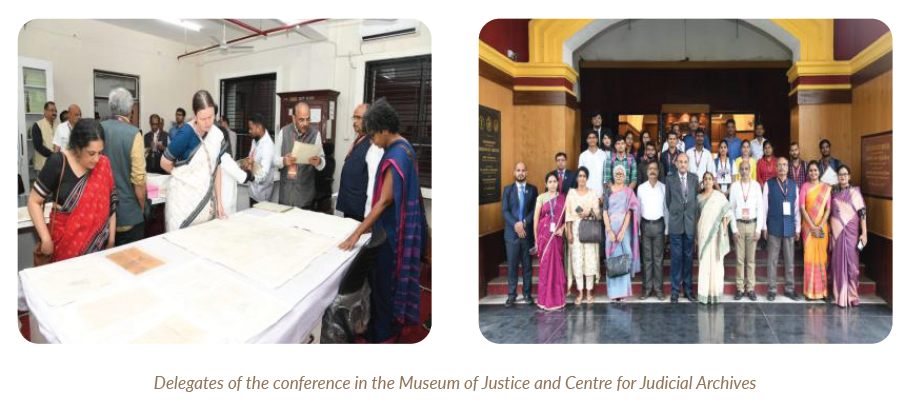
Progress of Judicial History of Odisha- Volume II
While the first volume covered the era of ancient, tribal, medieval and early British footprints, Judicial History of Odisha, Volume-II focuses on modern colonial Judicial History from 1758 till 1912, when the High Court of Patna was constituted and later, circuit bench of the High Court of Patna was constituted at Cuttack in 1916. Work on volume-II is underway. Materials have been collected from Tamil Nadu State Archives and Library of Madras High Court, West Bengal State Archives and National Library.
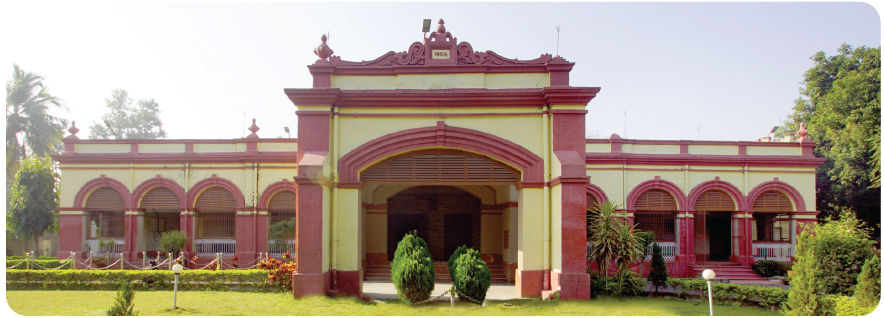
B. MUSEUM OF JUSTICE
A museum not only educates the future generations but also brings communities together acquainting them with their shared past. Realizing the need to cherish the rich heritage of Odisha’s legal system and presenting it before the coming generations, the High Court of Orissa had established a museum on 12th November 2017 in the heritage residential building of the Chief Justice in Barabati Quila, Cuttack – a building completed in the 1904 and built with colonial design. Photographs of legal luminaries, papers and collections of Shri Madhusudan Das and few artefacts, furniture and articles used in various Courts of Odisha were showcased in the Museum.
The Record Rooms of the High Court and District Courts containing old records dating back to 19th Century triggered the thought to rejuvenate the High Court Museum as the Museum of Justice as stories of freedom fighters, famous personalities and events of Odisha lay hidden in these records. The High Court decided to showcase them in the Museum of Justice and to present before the public the evolution of legal system of Odisha. The idea was to transform the existing museum from a repository of antiquities into a place of learning, research, co-mingling and teaching for historians, legal academics, researchers and students. Massive changes were proposed to its composition and hence, it was rechristened as a ‘Museum of Justice’ to make it more broad and theme-based.
Before embarking upon the project, the Chief Justice Dr. S. Muralidhar, Justice Sashikanta Mishra and Dr Lalatendu Das Mohapatra,
Director cum OSD of the Centre for Judicial Archives visited leading Museums and Libraries of the country to understand the collection, storage, conservation and exhibition protocols. Besides, antique objects and old records were collected from District Courts for showcasing in the museum. Refurbishment of Museum of Justice was entrusted to Indian National Trust for Art and Culture (INTACH) having expertise in conserving, repairing, redesigning the cultural heritages.
On 25th February, 2023 the refurbished Museum of Justice was inaugurated by Professor Ganeshi Lal, Governor of Odisha in the presence of Dr. Justice S. Muralidhar, Chief Justice, the sitting and former Judges of the High Court of Orissa, eminent historians and students of history. A booklet on the rejuvenation of the Museum was released in the inaugural function.
Contents
A consultative committee comprising historians, conservation experts, an Odia language expert and a legal expert was formed to advise on the contents of the Museum of Justice. On the advice of the Consultative Committee, one theme pavilion and seven galleries have been set up in the Museum of Justice apart from a library, a souvenir shop and an audio visual room.
While the library has law books and journals dating back to 18th and 19th centuries, the galleries have been set up with the following themes:
• Theme Pavilion is the introductory gallery containing digital timeline of the High Court of Orissa along with picture and graphic model of the Court and its development since inception; (photo)
• Gallery-1 attempts to trace out the evolution of justice system in Odisha from ancient to modern with notes, excerpts from old texts, photos, inscriptions and archival records; (photo)
• Gallery-2 depicts the freedom movement from 1804 to 1947 with references of trials and conviction of various freedom fighters from Odisha; (photo)
• Gallery-3 portrays the mode of dispensation of justice among the tribes as well as importance of tribal customary laws; (photo)
• Gallery-4 contains the glimpses of important judgements and news of the period from 1808 to 2013; (photo)
• Gallery-5 showcases the old court apparels & accessories; (photo)
• Gallery-6 tells about the historical timeline of development of legal education in Odisha and information on prominent lawyers of Odisha alongwith classification of legal practitioners; and(photo)
• Gallery-7 has a mock court room modelled on the heritage court rooms of Baripada and Aska. (photo)
Besides expanding the concept and contents of the Museum, the peripheral area has been developed and landscaped by the Cuttack Municipal Corporation and the Roads & Buildings Division, Works Department, Government of Odisha with parking facility, lawns, gardens, adventure park for children and pond.
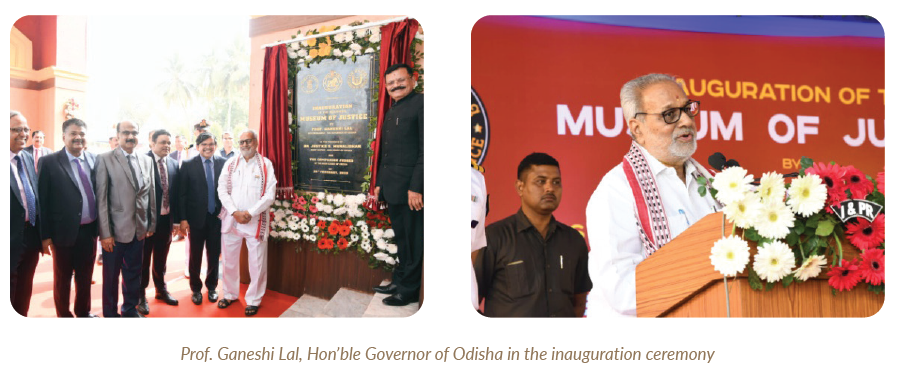
After inauguration of the Museum of Justice on 25th February, 2023, it was opened for the public on 10th March, 2023. On the occasion, a function was held in its premises to acknowledge the contribution of the members of the consultative committee. The Committee members Dr. Justice A.K. Misra, A.B. Tripathy, retired IPS, B.B. Mishra, retired IPS, Dr. Nivedita Mohanty, Historian, A.B. Ota, Director, Tribal Museum, Sanjib Chandra Hota, retired IPS, Prof Nihar Ranjan Pattnaik, Bhabani Shankar Chayani, Collector, Cuttack and Mallika Mitra, Director, INTACH were felicitated by the Chief Justice and the Judges of the High Court. After its inauguration, the Museum of Justice has been visited by dignitaries like Smt. Draupadi Murmu, the Hon’ble President of India, Dr. Justice D.Y. Chandrachud, Chief Justice of India and Judges of the Supreme Court of India and various High Courts apart from foreign nationals, researchers, lawyers and journalists. Within a short span of time it has become a favourite destination for people from various walks of life, especially students.
